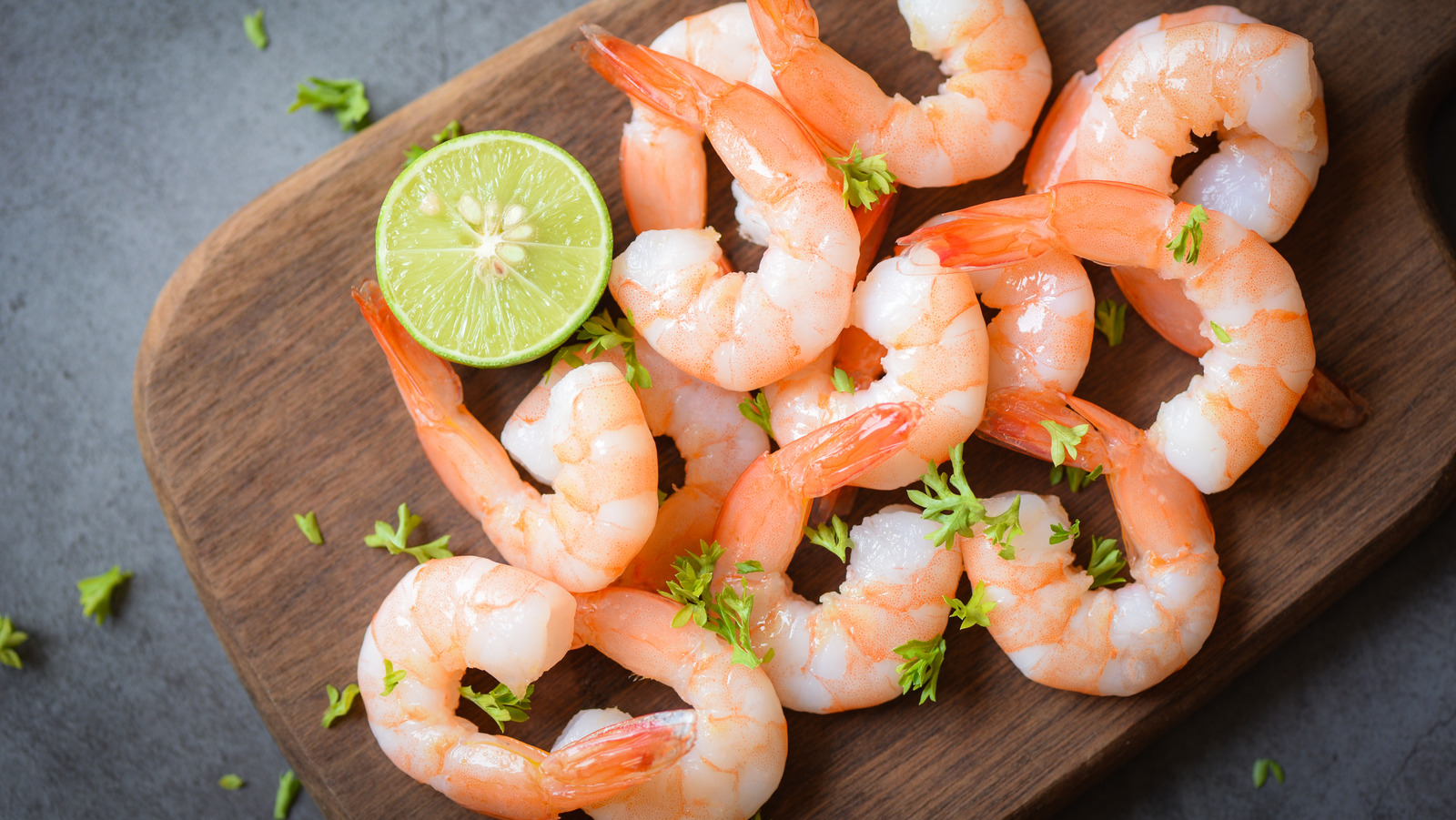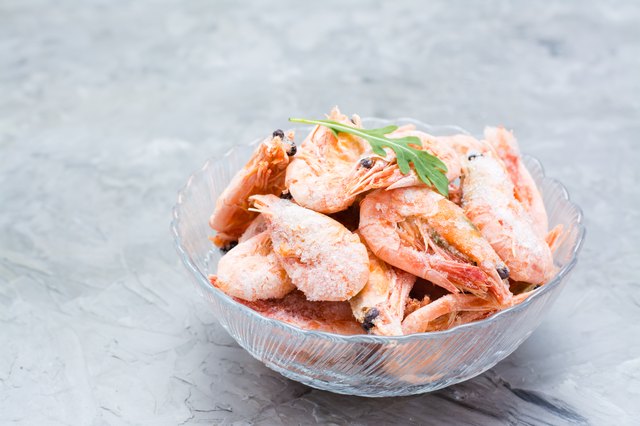
Understanding Shrimp Spoilage
Visual Inspection for Spoilage
When it comes to determining whether shrimp has gone bad, visual inspection is a key method. Signs of spoilage can often be detected by closely examining the shrimp. Look out for any discoloration, such as gray or yellow patches, which are clear indicators that the shrimp may be spoiled. Additionally, if the shrimp appears to be excessively slimy or shows signs of mold, it is best to discard it immediately. These visual cues are important indicators that the shrimp is no longer safe for consumption.
Detecting Spoilage Through Smell
In addition to visual cues, the smell of the shrimp can also provide valuable information about its freshness. Spoiled shrimp will often emit a strong ammonia or rotten odor, which is a clear sign that it has gone bad. When performing a smell test, trust your instincts and if the shrimp smells off, it is best to avoid consuming it.
By utilizing both visual inspection and smell tests, consumers can effectively determine whether shrimp has spoiled and should not be consumed. It is important to pay attention to these warning signs to protect against the risks of consuming spoiled seafood.

Common Signs of Spoiled Shrimp
Texture Changes as Indicators
When inspecting shrimp for spoilage, paying attention to texture changes is crucial. Spoiled shrimp may feel excessively slimy to the touch, which is a clear indication that it has gone bad. The texture of the shrimp should be firm and slightly springy, any deviation from this may suggest spoilage.
Color Changes in Spoiled Shrimp
Another important visual cue to look out for in spoiled shrimp is color changes. Discoloration, such as gray or yellow patches on the shrimp, is a tell-tale sign of spoilage. Fresh shrimp should have a translucent appearance and any noticeable discoloration should raise concerns about its safety for consumption.

Shelf Life and Storage of Shrimp
Key Factors Affecting Shelf Life
When it comes to the shelf life of shrimp, several key factors can influence how long it stays fresh. The freshness of the shrimp at the time of purchase plays a significant role in determining its shelf life. Proper handling and storage of shrimp, both before and after cooking, also impact how long it can be safely consumed. Additionally, the temperature at which the shrimp is stored, whether fresh or frozen, is crucial in maintaining its quality and preventing spoilage.
Proper Storage Techniques to Prevent Spoilage
To prevent shrimp from spoiling prematurely, it is essential to store it correctly. Fresh shrimp should be stored in the coldest part of the refrigerator, preferably in the original packaging or a sealed container. It is advisable to consume fresh shrimp within a day or two of purchase for the best quality. If freezing shrimp, ensure it is tightly sealed in a freezer-safe bag or container to prevent freezer burn. Properly frozen shrimp can last for several months without compromising its taste or texture. Always follow recommended guidelines for thawing frozen shrimp to maintain its freshness.
Using proper storage techniques and being mindful of key factors affecting shelf life can help preserve the quality of shrimp and prevent spoilage. By paying attention to these aspects, individuals can enjoy delicious and safe shrimp dishes without the risk of consuming spoiled seafood.

Health Risks of Consuming Bad Shrimp
Potential Foodborne Illnesses
When considering the shelf life and storage of shrimp, it is crucial to be aware of the health risks associated with consuming spoiled shrimp. Spoiled shrimp can harbor harmful bacteria, such as Vibrio parahaemolyticus, causing foodborne illnesses like diarrhea, vomiting, and stomach cramps. These symptoms can be particularly severe in individuals with weakened immune systems, pregnant women, and young children. Therefore, knowing how to identify signs of spoilage in shrimp is essential in preventing foodborne illnesses.
Impacts of Consuming Spoiled Shrimp
Consuming spoiled shrimp can have detrimental effects on one's health. Symptoms of food poisoning due to spoiled shrimp can range from mild gastrointestinal discomfort to more severe complications, depending on the individual's health status. Ingesting spoiled seafood can lead to dehydration, electrolyte imbalances, and in severe cases, hospitalization may be required for treatment. It is imperative to prioritize food safety and proper storage practices to avoid the risks associated with consuming bad shrimp.[13][14][15][16]

Detecting Spoilage Through Taste
Taste Testing Spoiled Shrimp
Biting into a piece of shrimp and noticing an unusual or off taste is a key indicator of spoilage. Spoiled shrimp can have a distinct spoiled flavor that is different from its usual fresh taste. If the shrimp tastes sour, ammonia-like, or generally unappetizing, it is best to avoid consuming it to prevent potential foodborne illnesses.
How to Determine Rancidity in Shrimp
In addition to taste, **visual inspection** to detect spoilage, paying attention to the texture, appearance, and smell of the shrimp is crucial. Rancid shrimp may exhibit a mushy or slimy texture, rather than the firmness associated with fresh shrimp. Cooking methods can also help in identifying rancid shrimp, as the process can intensify any off-smells present in spoiled seafood.
It is important to exercise caution when handling and consuming shrimp, as consuming spoiled shrimp can pose serious health risks. By being vigilant in recognizing the signs of spoilage and properly storing seafood, individuals can minimize the chances of experiencing foodborne illnesses associated with consuming bad shrimp.

Environmental Factors in Shrimp Spoilage
Impact of Temperature on Shrimp
When it comes to shrimp spoilage, temperature plays a critical role. **Refrigeration** is key in delaying the degradation of shrimp quality. Storing shrimp at temperatures above 40°F (4°C) can accelerate spoilage, leading to changes in texture, odor, and taste. It is important to store shrimp in the coldest part of the refrigerator and ensure they are properly sealed to prevent exposure to warmer temperatures.
Role of Moisture in Shrimp Spoilage
Moisture also plays a significant role in the spoilage of shrimp. Excessive moisture can promote the growth of **microorganisms** that contribute to the breakdown of shrimp quality. Proper packaging that allows for airflow while preventing excessive moisture buildup is crucial in maintaining the freshness of shrimp. Additionally, excess moisture can lead to freezer burn, affecting the texture and taste of shrimp.
It is essential to consider these environmental factors when handling and storing shrimp to prevent spoilage and ensure food safety. By controlling temperature and moisture levels, individuals can prolong the shelf life of shrimp and minimize the risks associated with consuming spoiled seafood.

Proper Disposal of Spoiled Shrimp
Disposing of Bad Shrimp Safely
When it comes to handling spoiled shrimp, it is crucial to dispose of them safely to prevent any potential health risks. **Throwing** away spoiled shrimp in a secure manner is essential. This involves sealing the spoiled shrimp in a plastic bag before discarding them in the trash to avoid cross-contamination with other foods. Proper disposal helps in reducing the chances of foodborne illnesses that may result from consuming spoiled seafood.
Precautions to Take When Handling Spoiled Seafood
Handling spoiled seafood, including shrimp, requires taking certain precautions to ensure safety. **Wearing** disposable gloves when dealing with spoiled shrimp can prevent any direct contact with harmful bacteria that may be present. It is also advisable to clean surfaces and utensils thoroughly after coming into contact with spoiled seafood to prevent the spread of contaminants. By following these precautions, individuals can reduce the risks associated with handling spoiled shrimp and maintain a safe food preparation environment.[25][26][27][28]

Avoiding Spoiled Shrimp when Dining Out
Guidelines for Inspecting Shrimp Dishes
When dining out, it is important to be vigilant and inspect shrimp dishes before consumption. **Visually** examine the shrimp for any signs of spoilage such as discoloration, sliminess, or mold growth. If the shrimp appears suspicious, it is best to avoid eating it to prevent potential foodborne illnesses.
Points to Note When Ordering Shrimp at Restaurants
When ordering shrimp at restaurants, there are certain points to keep in mind to avoid consuming spoiled seafood. **Always** inquire about the freshness of the shrimp dish before placing your order. Opt for reputable restaurants with good hygiene practices to minimize the risk of being served spoiled shrimp. Additionally, trust your instincts and if the shrimp does not seem fresh, do not hesitate to ask for an alternative dish. By being cautious and selective when ordering shrimp at restaurants, you can enjoy a safe and satisfying dining experience.[29][30][31][32]

Avoiding Spoiled Shrimp when Dining Out
Guidelines for Inspecting Shrimp Dishes
When dining out, customers should be vigilant when inspecting shrimp dishes for signs of spoilage. **Visually** examining the shrimp is crucial to identify any discoloration, excessive sliminess, or mold growth that may indicate spoilage. If any of these visual cues are present, it is recommended to avoid consuming the shrimp to prevent potential foodborne illnesses.
Points to Note When Ordering Shrimp at Restaurants
Customers should always consider certain points when ordering shrimp at restaurants to ensure they are not served spoiled seafood. **Inquire** about the freshness of the shrimp dish before placing an order, and opt for establishments with a reputation for good hygiene practices. Trusting one's instincts is key – if the shrimp does not seem fresh, customers should not hesitate to request an alternative dish. By exercising caution and choosing wisely when ordering shrimp at restaurants, diners can enjoy a safe and satisfying dining experience.
Conclusion
Recap of Ways to Detect Spoilage in Shrimp
– **Visual Inspection**: Check for discoloration, sliminess, and mold growth on the shrimp.- **Ask About Freshness**: Inquire about the freshness of the shrimp dish before ordering.- **Trust Your Instincts**: If the shrimp doesn't seem fresh, request an alternative.
Final Thoughts on Ensuring Shrimp Quality
Ensuring the quality of shrimp when dining out requires attentiveness and proactive decision-making. By following the provided guidelines and staying mindful of visual cues of spoilage, customers can safeguard themselves against potential health risks associated with consuming spoiled shrimp.[33][34][35][36]
DK FAQ MARK
FAQ about How to Tell If Shrimp Is Bad: Spoilage Signals
Q: What are the signs that shrimp has gone bad?
A: Some spoilage signals of bad shrimp include a fishy odor, slimy texture, discolored appearance (like gray or green spots), and a sour or ammonia smell.
Q: Can you still eat shrimp if it is a little off?
A: It is not recommended to consume shrimp that show signs of spoilage. Eating bad shrimp can lead to foodborne illnesses and should be avoided.
Q: How long can shrimp be stored in the refrigerator before it goes bad?
A: Ideally, fresh or cooked shrimp should be consumed within 2 days if stored in the refrigerator. Frozen shrimp can last up to 6 months if properly stored.
Q: What is the best way to store shrimp to prevent it from spoiling?
A: To prevent shrimp from going bad, store it in an airtight container in the refrigerator or freezer. Always keep it at a temperature below 40°F (4°C) to maintain freshness.
Q: Is it safe to eat cooked shrimp that has been left out at room temperature?
A: It is not safe to consume cooked shrimp that has been left out at room temperature for more than 2 hours. Bacteria can multiply quickly at room temperature, increasing the risk of foodborne illnesses.

Gourmet Tiger, a culinary sensation, was established with a vision to delight taste buds and create unforgettable dining experiences. Specializing in cakes, casseroles, lunch, catering, and more, Gourmet Tiger has become a household name synonymous with exquisite flavors and impeccable service. Since its inception, Gourmet Tiger has been dedicated to crafting delectable treats and savory dishes that exceed expectations. Their commitment to using only the finest ingredients and innovative culinary techniques has set them apart as a leader in the food industry.